College Sports
SEC Leaders Hint at a Seismic Shift in College Sports—Will the Powerhouse Conference …
The SEC and Big Ten are re-evaluating their roles within the NCAA, with some leaders considering possible departure due to legal and financial pressures. Major changes in college sports, including athlete compensation (NIL), antitrust lawsuits, and increased commercialization, are challenging traditional NCAA authority. Dissatisfaction with the NCAA’s regulatory effectiveness is prompting discussions about conference autonomy […]
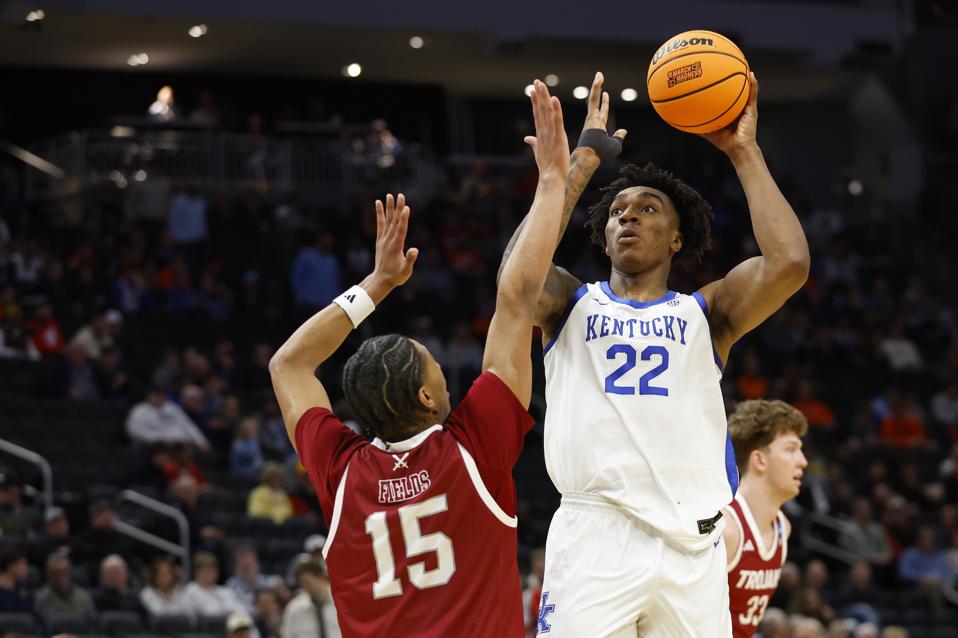


- The SEC and Big Ten are re-evaluating their roles within the NCAA, with some leaders considering possible departure due to legal and financial pressures.
- Major changes in college sports, including athlete compensation (NIL), antitrust lawsuits, and increased commercialization, are challenging traditional NCAA authority.
- Dissatisfaction with the NCAA’s regulatory effectiveness is prompting discussions about conference autonomy versus centralized oversight.
- Severing ties with the NCAA could endanger national championships, traditional rivalries, and the stability of Olympic and academic sports programs.
- The future of college athletics may be redefined, as major conferences debate whether to trust the NCAA’s leadership or pursue independent governance.
Whispers of upheaval echo through the hotel corridors where college sports’ most influential minds gather, their conversations charged with urgency as the status quo faces unprecedented scrutiny. The SEC—an emblem of athletic dominance and cultural significance—stands at the heart of a rumbling debate: does its future belong within the NCAA’s storied tradition, or is it time to chart a new course?
Rumination has turned to restlessness among SEC athletic directors, some now openly questioning the value of continued NCAA membership. These deliberations are not idle. For decades, the NCAA has been the governing body shaping the landscape, enforcing rules, hosting celebrated championships, and ensuring a degree of harmony amidst fierce competition. March Madness, with its shared brackets and riveting upsets, has long served as the glue binding schools and fans alike.
But the ground beneath collegiate athletics is shifting. Legal battles—most notably the House v. NCAA antitrust case—have battered traditional models of amateurism, opened doors to athlete compensation, and forced universities to consider the nature of their allegiance. For SEC power brokers, the question is no longer abstract. Legal and financial pressures gnaw at their patience, pressing conference leaders to contemplate drastic steps for institutional survival.
It’s not just the SEC. The Big Ten, another behemoth, is quietly entertaining similar ideas. Their shared autonomy has grown, but a sense of dissatisfaction lingers. Critics argue that NCAA enforcement and regulatory mechanisms have failed to keep pace with modern challenges, including name, image, and likeness (NIL) reforms, escalating litigation, and the rapid commercialization of college football and basketball.
Yet even as some contemplate departure, there’s an undercurrent of caution. The NCAA’s role in orchestration—especially in renowned national championships—remains a powerful cement. The prospect of severing ties raises the specter of fragmentation, the unraveling of traditions, and uncertainty for thousands of athletes.
Administration officials stress the need for continued oversight, recognizing that athletics in America thrives under some measure of regulation. The alternatives—complete deregulation or fragmented governance—could threaten not only revenue sports, but also Olympic disciplines and academically integrated programs.
As SEC meetings in Miramar Beach unspool, the agenda is packed: football playoff expansion, the prospect of a nine-game schedule, and looming questions about the future of national championships swirl amid the sea air. But the true undercurrent is existential. Should the most powerful conference in sports trust its future to the NCAA’s uncertain stewardship—or is it time to rewrite the rules themselves?
For millions who fill stadiums and pencil in tournament brackets, the answer may redefine the spectacle and spirit of college sports for a generation.
Key takeaway: The SEC, along with other top conferences, stands at a crossroads. The decisions made here won’t just shape football schedules or championship lineups—they could rewrite the entire rulebook for the future of American collegiate athletics.
SEC and NCAA on a Collision Course: What a Breakaway Could Mean for College Sports Fans, Athletes, and March Madness
SEC Power Play: Why the Future of College Sports Hangs in the Balance
The ongoing power struggle between the SEC and the NCAA is more than just sports politics—it’s about the future of college athletics as we know them. Beyond headline debates at leadership retreats, tectonic shifts are underway that could reshape traditions, financial models, and student-athlete experiences. Here’s what’s really at stake, what could happen next, and what every fan—and stakeholder—should know.
—
Untold Developments: What’s Really Fueling the SEC Uprising?
1. Growing Financial Disparity
The SEC and Big Ten conferences—already wealthy thanks to multi-billion dollar television deals (e.g., the SEC’s $3 billion ESPN/ABC contract)—are seeing ever-wider revenue gaps compared to smaller conferences. This disparity intensifies the temptation for top schools to “go it alone” and control their own media rights and playoff systems.
2. Athlete Empowerment and NIL
The arrival of Name, Image, and Likeness (NIL) earnings has changed the landscape. Athletes today can earn market-based endorsements, putting pressure on schools and conferences to create more flexible, athlete-friendly governance structures—something the NCAA has historically stymied or hesitated to accommodate.
3. Legal Precedents and Litigation
Cases like House v. NCAA, Alston v. NCAA, and O’Bannon v. NCAA have set legal standards that erode the NCAA’s ability to control amateurism. Courts have consistently ruled in favor of athletes’ rights, exposing the NCAA to billions in potential back pay, damages, and restructuring costs (ESPN, 2023).
—
Breaking Down the Risks: What Happens if the SEC (or Big Ten) Leaves?
How-To Guide: What a Breakaway League Might Do
1. Form a New Governing Body: The SEC and other top conferences could form a “super league” with its own rules, enforcement, and championship structures.
2. Negotiate TV and Sponsorship Direct: This enables more lucrative, flexible deals—potentially rivaling pro sports broadcasting models.
3. Design a New Playoff System: Football playoffs, March Madness alternatives, and other championships could become exclusive, reshaping fan traditions and school loyalties.
4. Redefine Athlete Compensation: Clearer, more competitive NIL rules and possibly revenue sharing directly with athletes.
5. Direct Oversight on Compliance and Eligibility: Schools could set their own standards for eligibility, scholarships, and transfer policies.
—
Real-World Use Cases
– Super Bowl-Level Events: An SEC-led football playoff could push championship games into Super Bowl territory in terms of viewership and marketing.
– Regionalized, Custom Championships: The SEC might develop new basketball, baseball, or Olympic-sport championships with tailored rules, boosting their brands.
—
Industry Trends & Market Forecasts
– Increased Autonomy: Power Five conferences are pushing for more independence—and the NCAA is losing influence, especially after the 2021 Supreme Court ruling (NCAA v. Alston).
– Revenue Surge: ESPN predicts media rights contracts for a super league could top $2 billion annually.
– Potential Fragmentation: If the “biggest” conferences leave, the rest of Division I could splinter, threatening the viability of smaller programs and sports.
—
Reviews, Comparisons, and Limitations
Pros & Cons Overview
| Pros | Cons |
|—————————————————–|———————————————————-|
| Higher revenue control for breakaway conferences | Possible loss of “March Madness” as we know it |
| More flexible compensation rules for athletes | Less exposure/competition for smaller schools |
| Tailored rules and compliance systems | May erode storied traditions and historic rivalries |
| Enhanced recruiting and branding opportunities | Uncertain future for Olympic/non-revenue sports |
Security & Sustainability
– Smaller conferences may struggle financially and could lose access to lucrative NCAA revenue sharing—a foundational support for non-revenue sports (like swimming, volleyball, or fencing).
– The status and oversight of Title IX (gender equity) enforcement would become much more complex in a breakaway league.
—
Most Pressing Reader Questions—And Clear Answers
Q: Will March Madness Survive if the SEC Leaves?
A: Highly uncertain. SEC and Big Ten departures could strip March Madness of its biggest teams and TV draws. The tournament might split, with rival championships forming.
Q: What about Olympic Sports?
A: Smaller, non-revenue sports rely heavily on NCAA funding and broad-based championships. A split could lead to fewer scholarships and fewer opportunities.
Q: Would athletes get paid directly in a breakaway league?
A: It’s possible. Super leagues could negotiate group licensing, profit-sharing, or even salaries for student-athletes, especially in revenue sports.
Q: Are other conferences thinking about leaving too?
A: Yes. The Big Ten, ACC, and others are watching carefully. If the SEC goes, a domino effect is likely.
—
Expert Opinions & Interviews
– Sports law expert Michael McCann (Sportico): “The legal and financial trends all point toward greater autonomy for the richest conferences. The NCAA’s power is shrinking.”
– SEC Commissioner Greg Sankey: “We want to find solutions, but the environment is changing so quickly that we need to be open to all possibilities.”
– NCAA President Charlie Baker: “Championships tie us together, but we recognize that reforms are needed to keep everyone at the table.”
(Sources: ESPN, Sportico, NCAA)
—
Actionable Recommendations & Quick Tips
For Fans
– Stay informed: Changes could alter game schedules, streaming rights, and traditional rivalries.
– Support Olympic and non-revenue sports: Advocacy may be needed if funding is cut.
For Athletes
– Know your NIL rights: Opportunities are growing, but so are compliance risks.
– Plan for possible changes in scholarship, transfer, and eligibility rules.
For Administrators
– Invest in compliance and legal expertise.
– Prepare for accelerated negotiations with media, sponsors, and third-party stakeholders.
—
The Bottom Line
The SEC’s possible exit from the NCAA isn’t just sports gossip—it’s potentially the most profound change in college athletics in a century. From March Madness survival to athlete pay and the future of Olympic sports, the ripple effects are enormous and touch every level of the game. Watch for key decisions in the coming months—because the future of college sports is more up for grabs than ever before.
For ongoing updates and authoritative information on governance and regulations, visit the NCAA.
College Sports
Shortage of new teachers is hurting Pa. kids’ academic prospects, report says
HARRISBURG — When D’Arcy McQuoid was hired to teach special education in Philadelphia public schools 32 years ago, it took a year for the district to find a place for her in a classroom. Early career teachers today “can’t believe it” when she tells them about that wait. Philadelphia and other school districts statewide […]
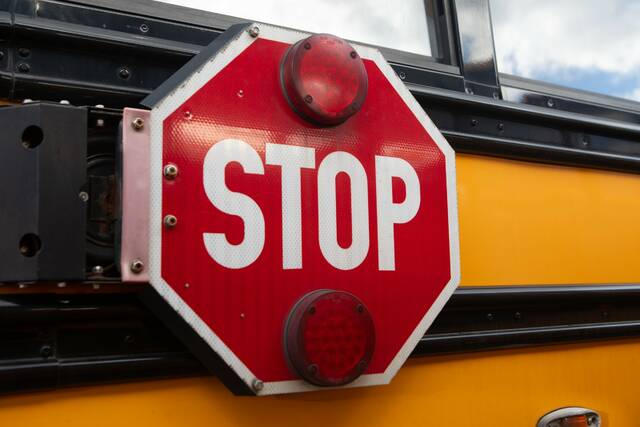
HARRISBURG — When D’Arcy McQuoid was hired to teach special education in Philadelphia public schools 32 years ago, it took a year for the district to find a place for her in a classroom.
Early career teachers today “can’t believe it” when she tells them about that wait.
Philadelphia and other school districts statewide are struggling to find enough certified teachers to fill vacancies, a trend that advocates for students say is diminishing the quality of kids’ education.
Why fewer people are becoming certified teachers in Pennsylvania is complex, but school officials, educators, and experts offered theories from inequity that leads to low salaries to long commute times and undesirable work locations in rural communities.
Advocates are currently pushing state lawmakers to continue sending more money to the state’s poorest schools and provide more funding for student-teacher stipends.
Teachers get their certifications after completing a preparation program and a student-teaching requirement. The credential ensures that they have enough experience and training before entering the classroom.
A recent report from Penn State education researchers found that the number of teaching certificates issued by the commonwealth dropped by more than 60% between the 2010-11 and 2023-24 school years.
When districts can’t find enough certified teachers to fill vacancies from retirement and regular turnover, districts use emergency permits. These permits are less rigorous than teaching certifications, requiring only a bachelor’s degree, and the state issues them only when schools can find no fully qualified applicants.
The Penn State report found that’s increasingly the case, and during the 2021-22 school year, amid the pandemic, the number of emergency permits the state issued surpassed the number of normal certifications.
The number has remained higher ever since, particularly in districts with concentrations of poverty and students of color.
This is a big concern for public education advocates. Emergency certifications were never meant to be in widespread use, said Christopher Lilienthal, a spokesperson for the Pennsylvania State Education Association, a teachers union.
“It went from being a stopgap thing that gets used very rarely to something that school districts and school entities have had to use consistently to fill these positions because of this shortage,” he said.
Ed Fuller, an associate professor at Penn State’s College of Education and a co-author of the report, said all teacher shortages are negatively associated with student outcomes. He also stressed that shortages can have a negative economic impact on the state.
“We know when kids have lower achievement, they’re less likely to generate tax revenue, they’re more likely to require more state support in the health system, they’re more likely to end up in the criminal justice system,” he said. “So when we’re not providing all of our children quality teachers every single year … in fact, we’re losing money. We’re losing money from the state.”
Teacher shortages across the state vary widely, but they are heavily concentrated in urban and rural counties, according to Fuller.
Districts with higher rates of poverty tend to be the ones with worse shortages, he said, and those with high numbers of students of color also tend to suffer larger shortages.
Inequalities in Pennsylvania’s public school districts are a longstanding concern among educators and advocates.
State lawmakers are under a 2023 court order to fix what a judge called an unconstitutionally inequitable public education system. Last year, they made their first big attempt at rectifying it, sending $500 million to the commonwealth’s poorest districts.
Democratic lawmakers in the state House and Democratic Gov. Josh Shapiro have proposed a similar investment in this year’s budget, which is due June 30. But Republicans, who control the state Senate, have not committed to the spending.
Education advocates told Spotlight PA they are optimistic about proposed increases to education funding. Along with the extra money for poor schools, Shapiro has proposed doubling student-teacher stipends to $40 million, according to the budget plan.
The program, now in its first year, currently provides $10,000 stipends to student-teachers on a first-come, first-served basis.
“If this program continues, I would be shocked if we did not see a dramatic uptick in the number of college students coming out of college and getting their first-time certificates for being an educator,” said Aaron Chapin, PSEA’s president.
A big district with unique problems
The School District of Philadelphia, which serves Pennsylvania’s biggest city, enrolls nearly 200,000 students and operates 331 schools.
The Penn State report found severe teacher shortages in the district, and also gave it low marks for teacher quality and levels of attrition. In the current school year, there were 644 vacancies across the district, and last school year, 23% of teachers had emergency permits, according to the report.
Laura Boyce, executive director of the teacher advocacy nonprofit, Teach Plus Pennsylvania, said underfunding could be the cause of a lot of these issues. But she emphasized that more research is needed to fully understand the scope of the problem.
“The districts that are suffering the most from the teacher shortage are those that have the largest adequacy gaps, that are the most underfunded by the state,” Boyce said.
An adequacy gap is a concept state lawmakers introduced to address the 2023 court ruling that found Pennsylvania hadn’t invested enough money in poor school districts. Defined as the difference between the amount a district spends per student and the amount that the district would need to spend to serve each child at an acceptable level, the metric now informs new education spending.
Lawmakers have estimated that Philadelphia’s school district has the biggest adequacy gap in the state, at more than $1.2 billion total.
Boyce said adequacy gaps lead to districts offering lower teacher salaries and having poorer working conditions, which make it difficult for them to compete for teachers.
In addition to the larger national trends she named — declining prestige of the teaching profession, student behavioral issues, and teacher attrition — she identified inequity as a core concern. “If you have just a reduced supply of teachers, not all districts are experiencing it the same, and those with the fewest resources are going to be the ones who are having the hardest time both recruiting and retaining teachers,” Boyce said.
Shortages have created a new reliance on emergency certified teachers in Philadelphia. As a potential solution, some school districts are looking for ways to encourage emergency certified teachers to get more certifications, Boyce said.
The issue is urgent. Students internalize staff shortages and feel like they are part of the problem when the real issue is systemic, according to Kate Sundeen, a teacher at the Academy at Palumbo high school and political liaison for the School District of Philadelphia.
“As much as we say, ‘It’s not about you’ to the students, the students are like, ‘Well, then why isn’t it changing?’” Sundeen said.
Rural counties have lots of land, few teachers
Rural counties also feel the strain of teacher shortages, Fuller said.
Warren County School District, located in northwestern Pennsylvania, enrolls nearly 3,800 students and operates nine schools. According to the Penn State report, during the period reviewed, Warren, like Philadelphia, had a severe teacher shortage, lower quality teachers, and high levels of attrition.
This school year, there are only four vacancies across the district, but as of last year — the most recent year with complete data — 22% of teachers had emergency permits.
Shortages particularly hurt technical and special education, as well as advanced math and science courses, according to Gary Weber, the superintendent of Warren County School District. The district encompasses almost the entire county.
Weber thinks the shortage issue dates all the way back to the 10% cut to the state’s basic education budget under Republican Gov. Tom Corbett in 2010, in the midst of a serious post-recession shortfall.
The move, he said, caused his district to furlough many teachers. He thinks the state then saw a trickle-down effect in which Pennsylvania colleges and universities stopped offering teaching programs because there were fewer available jobs across the commonwealth.
Weber said it’s especially difficult to find teachers certified in specialized subjects such as physics.
“We used to have, 20 years ago, 50, 60, 70, 80 applicants. We’re lucky if we have 10 at this time. In many cases, we might have two or three. And in some cases, we’re going out and trying to find people,” he said.
Fuller said rural school districts like Warren often face recruiting challenges because they have fewer people around.
“Unless a district is relatively close to prep programs producing a fair amount of teachers, then it is hard to find enough teachers to hire. Research shows that teachers work where they went to high school or where they went to college,” he said.
Teachers in big rural counties also struggle with commute times. Warren’s single primary school district, for instance, covers almost the entirety of the county’s nearly 900 square miles. Schools are spaced out around the district, so even teachers living inside county lines may have to travel long distances for work.
Rural Blair County has similar staffing problems, according to teachers who shared their experiences with Spotlight PA.
While Penn State’s study found that Blair County’s overall teacher shortage wasn’t as bad as others — it was rated as having a “high” shortage as opposed to a “severe” one, like Philly and Warren — its supply of new teachers, teacher quality, and rate of attrition all got low marks.
Dan Drumm, a music teacher in the county’s Spring Cove School District, said he’s wary of encouraging his elementary students to become teachers.
Students aren’t oblivious to debates over educational politics, testing, expenses, safety, and other issues, Drumm explained.
“It’s the culmination of all these things together that make the profession undesirable for a lot of people,” he said.
As a potential solution, some schools are starting “Grow-your-own” programs to get high school students interested in the profession.
“You are attracting those who are already in the community, already connected to schools, and creating high-quality, low-cost pathways for them into the profession,” Boyce said of the initiative.
Some schools also offer formal pathways, like Career and Technical Education programs, for students interested in becoming teachers.
Other schools take a more homespun approach.
Social studies teacher Joe Logan, who has worked at Central High School in the Spring Cove district for 24 years, first ran his “Future Teachers Club” in the 2021-22 school year. In meetings, Logan talks with students about teaching, getting an education degree, and local opportunities. He started the club to replicate the inspiration he got from his high school teachers.
“I’d like to be that same kind of catalyst for the students that are looking at getting into education,” he said.
Elena Eisenstadt is an intern with the Pennsylvania Legislative Correspondents’ Association. Learn more about the program. Spotlight PA is funded by foundations and readers like you who are committed to accountability journalism that gets results.
College Sports
2x Olympian Bri McLaughlin shares wisdom at girl’s hockey camp in Rochester
ROCHESTER, N.Y. (WHEC) – This week, Premier Ice Prospects is hosting a camp for girls hockey players around late elementary school to middle school age. Former Olympian Bri McLaughlin is one of the many coaches helping the young players learn on and off ice skills. While they’re far from their potential as hockey players, they’re […]
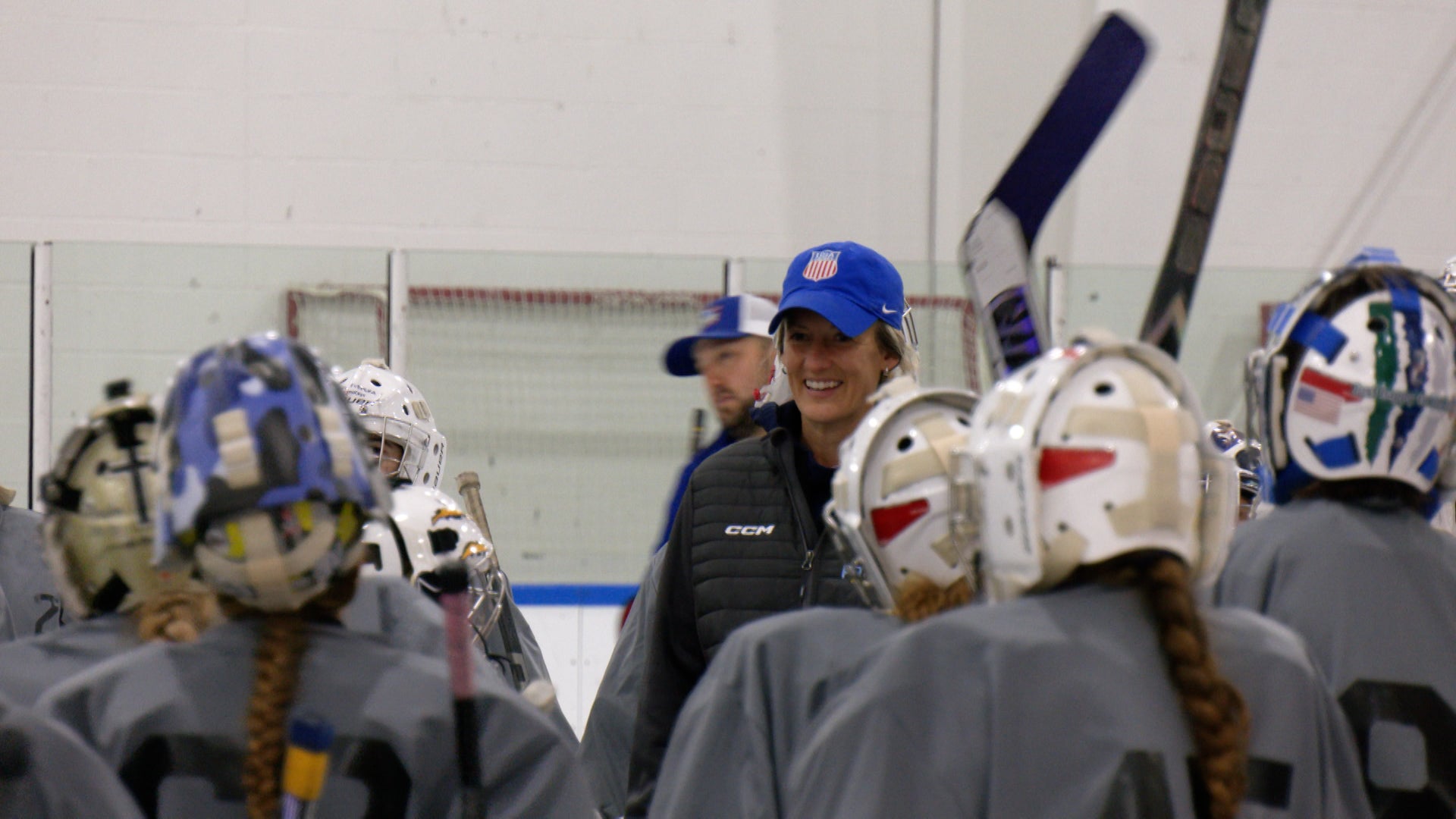
ROCHESTER, N.Y. (WHEC) – This week, Premier Ice Prospects is hosting a camp for girls hockey players around late elementary school to middle school age. Former Olympian Bri McLaughlin is one of the many coaches helping the young players learn on and off ice skills.
While they’re far from their potential as hockey players, they’re already learning tons of things to set them up for bright future
But having a league of their own hasn’t always been the case for girl’s hockey.
“When we were little it was like, we want to play in the NHL! We didn’t have that option, I barely even knew about playing college hockey,” said McLaughlin.
But now – even for the youngest skaters – they’ve got their own leagues, teams, and even a high profile camp taking place this week at the Tim Horton’s Iceplex.
“I just want to improve on everything. I want to get to a really high level,” said camper Kenzie Brown.
“You learn how to stick handle, you know how to shoot, and I feel really comfortable with the coaches,” said camper Savina Veltri.
Of course, it’s easy to feel comfortable when you learn from the best, like two-time Olympian Bri McLaughlin, who had as long of a pro career as any women’s hockey player out there.
“Maybe it’s a little bit different than what they’ve been taught and you see this UGH in their face, they’re a little bit frustrated and then they put it together a little bit more, and they put it together a little bit more, and we’re finishing every single practice with a smile on our face and feeling a little bit better about that skillset,” said McLaughlin.
Campers have a week to really get better and improve on the ice. But off the ice it matters too. These girls are here to make friends with each other and also just improve character traits that matter in life in general.
“You see them on their boys teams and they have such a different personality when they get here, and they’re with their friends, and they get to learn together,” said McLaughlin.
“People can learn from each other by being good teammates, being nice to each other and picking each other up. People learn from that and then it can grow on,” said Brown.
And unlike when Bri McLaughlin started playing, there is a clear avenue to playing college hockey, and even in the pros.
“It’s an honor, cuz I get to play it as a kid and I want to play it through college hockey,” said Veltri.
“It makes me excited that there’s more women’s hockey in the world. Back then there was only boys hockey and there wasn’t a PWHL like there is now,” said Brown.
Making it to the PWHL isn’t too big of a dream. We just saw 2 Rochester natives get drafted to the league on Tuesday, in Haley Winn and Kiara Zanon. It looks like there could be more to follow in the future.
College Sports
University of New Hampshire
AMESBURY, Mass. – Sixteen student-athletes on the University of New Hampshire women’s hockey team were named to the Hockey East 2024-25 Women’s All-Academic Team. The announcement was made Wednesday by the league. Senior forward Kira Juodikis (Windsor, Ontario) and sophomore goaltender Noemi Martinez (Glen Ridge, N.J.) were both named a Hockey East Top Scholar-Athlete; […]

Senior forward Kira Juodikis (Windsor, Ontario) and sophomore goaltender Noemi Martinez (Glen Ridge, N.J.) were both named a Hockey East Top Scholar-Athlete; all 21 honorees recorded a perfect 4.0 GPA in the 2024-25 academic year.
Those 21 student-athletes, including Juodikis and Martinez, also comprise the 2024-25 Hockey East All-Academic All-Star Team, which recognizes the highest GPA by position.
Juodikis was among the 20 women’s Hockey East women’s players who received Distinguished Scholar status by qualifying for the All-Academic Team each of the past four seasons. She was also named a Hockey East Third Team All-Star for the third consecutive year in 2025.
This is the second time in as many years that Martinez has earned Top Scholar-Athlete, All-Academic All-Star Team and All-Academic Team recognition.
Every student-athlete on the 2024-25 Hockey East All-Academic Team achieved a grade point average of 3.0 or higher in both academic semesters of competition. A record total of 203 student-athletes were honored on this year’s women’s team.
Grad students Chavonne Truter (Uxbridge, Ontario) and Andi Calderone (Kirkland, Quebec) were recognized for the third time, as was senior Marina Alvarez (Center Moriches, N.Y.).
Senior Brooke Hammer (Commerce Township, Mich.) and junior Kelly Harty (Billerica, Mass.) were among the second time honorees. Sophomores Julia Cabral (Lee, N.H.), Lucie Legro (Brentwood, N.H.), Sydney Leonard (St. Bonifacius, Minn.) and Martinez were recognized for the second consecutive year.
Grad students Sara Boucher (Burlington, Ontario) and Maddie Crowley-Cahill (Haverhill, Mass.), senior Shea Verrier (Reading, Mass.) and juniors Alyson Hush (Scarborough, Ontario) and Hannah Rodgers (Wilmington, N.C.) are all first time honorees. Freshman Charlie Rauch (Ramsey, N.J.) earned the honor in her first year.
College Sports
Strickulis and D’Antonio Named to CSC Academic All-District® At-Large Team
Story Links EASTON, Mass. (June 25, 2025) – Junior Makayla Strickulis and sophomore Julieta D’Antonio of the Stonehill College field hockey team have been named to the 2025 College Sports Communicators (CSC) Academic All-District® At-Large Team, as announced by the organization. The CSC Academic All-District® At-Large program recognizes the nation’s top student-athletes for their combined achievements in […]
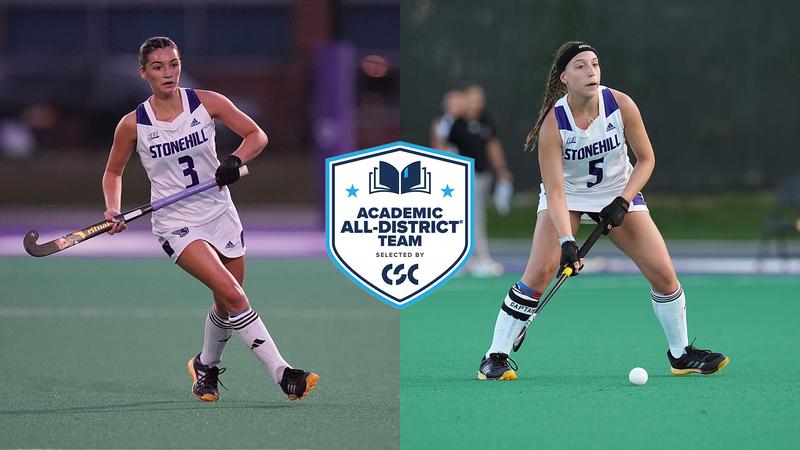
EASTON, Mass. (June 25, 2025) – Junior Makayla Strickulis and sophomore Julieta D’Antonio of the Stonehill College field hockey team have been named to the 2025 College Sports Communicators (CSC) Academic All-District® At-Large Team, as announced by the organization.
The CSC Academic All-District® At-Large program recognizes the nation’s top student-athletes for their combined achievements in athletic competition and academic excellence. Honorees are selected across four divisions — NCAA Division I, II, III, and NAIA — with consideration for sports not sponsored by specific CSC Academic All-America® teams.
Strickulis earns Academic All-District® honors for the second consecutive year, following another standout season on the field and in the classroom. A finance major, she is tied for the second-highest cumulative GPA on the team with a 3.97. In addition to being named to both the NEC Commissioner’s and Academic Honor Rolls and inducted into the Chi Alpha Sigma Honor Society, she appeared in all 18 games for the Skyhawks, making 16 starts. She matched her career-high with four goals, while setting new personal bests in minutes played (806), shot attempts (34), and shots on goal (18).
D’Antonio also turned in a strong sophomore campaign while maintaining a 3.97 GPA as a chemistry major. A two-time selection to the NEC Commissioner’s Honor Roll, she recorded career-highs in goals (2), assists (2), points (6), shot attempts (22), and shots on goal (10).
Stonehill concluded its 2024 season with a 7-11 overall record, including a 4-4 mark in NEC play, finishing sixth in the conference and just one game shy of a postseason berth. The Skyhawks continued to build momentum in their third NCAA Division I season, improving by two overall wins and three NEC victories compared to their inaugural 2022 campaign.
About College Sports Communicators
College Sports Communicators (CSC) was founded in 1957 and is a 3,200+ member national association for strategic, creative, and digital communicators across intercollegiate athletics in the United States and Canada. The current name of the organization was adopted following a member-wide vote on Aug. 31, 2022.
From its founding in 1957 until the 2022 name change, the organization was known as College Sports Information Directors of America (CoSIDA).
The name change signaled a significant step in a broader strategic plan to highlight the association’s evolution and growth. The move better aligns with the association’s membership makeup and further positions the organization to support and advocate for its members who serve in the communications, digital, and creative sports industry, regardless of position or title.
The organization, which celebrated its 65th anniversary during the 2021-22 academic year, is the second-oldest management association in all intercollegiate athletics. College Sports Communicators became an affiliated partner with NACDA (National Association of Collegiate Directors of Athletics) in December 2008.
For the latest on Stonehill Athletics, follow the Skyhawks via social media on Twitter, Facebook, and Instagram.
College Sports
Winter to serve as Video Coach for Team USA at upcoming IIHF World Junior Championship
Story Links COLORADO SPRINGS, Colo. – Bemidji State University Men’s Hockey associate head coach Travis Winter has been named a Video Coach for the U.S. National Junior Team for the upcoming 2026 IIHF World Junior Championship announced by USA Hockey. Winter will join Greg Brown (Boston College), Steve Miller […]
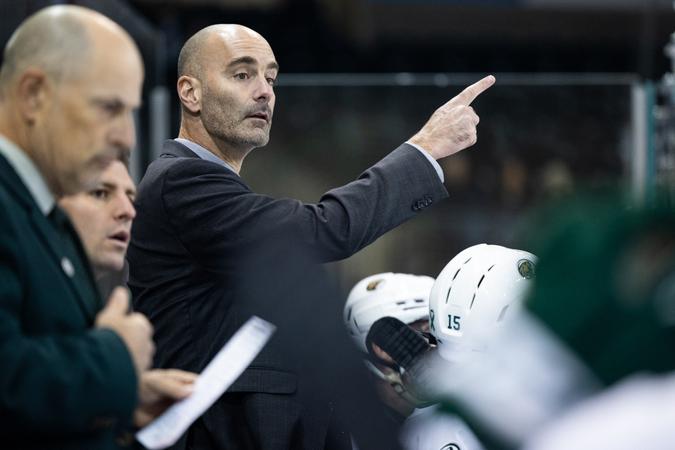
COLORADO SPRINGS, Colo. – Bemidji State University Men’s Hockey associate head coach Travis Winter has been named a Video Coach for the U.S. National Junior Team for the upcoming 2026 IIHF World Junior Championship announced by USA Hockey.
Winter will join Greg Brown (Boston College), Steve Miller (Minnesota), Garrett Raboin (Augustana), David Lassonde (USA Hockey) and Jacob LeRoy (Minnesota) on head coach Bob Motzko’s (Minnesota) coaching staff for the U.S.
The U.S. enters the 2026 IIHF World Junior Championship having won goal in the previous two World Juniors. The tournament will be played in St. Paul and Minneapolis, Minn., from Dec. 26, 2025 – Jan. 5, 2026.
Travis Winter, associate head coach of the Bemidji State University men’s ice hockey team, is serving on the staff of the U.S. National Junior Team for the first time.
The St. Cloud, Minnesota, native has been part of the Beavers coaching staff for the last 11 campaigns, including the first eight as assistant coach and the last three as associate head coach.
Previous to his time at BSU, he was the head coach and director of hockey operations for the Aberdeen Wings of the NAHL for one season (2013-14). Prior to that, he spent parts of four seasons (2009-10 to 2012-13) serving as assistant coach and recruiting coordinator for the USHL’s Cedar Rapids RoughRiders.
Winter was also a volunteer coach for the Saint Johns University (Minn.) men’s ice hockey program in 2009 and served on the coaching staff of the USA Hockey Selection 15 National Camp in 2010.
As player, Winter was a four-year letterwinner (2005-09) for Bemidji State where as a senior he served as captain and helped the Beavers to the program’s first-ever Frozen Four appearance in 2009.
For more information on the Bemidji State men’s hockey program, tickets or schedules, visit BSUBeavers.com, follow the Beavers on X or Instagram or like them on Facebook.
Located on the shore of Lake Bemidji, Bemidji State University sponsors 15 varsity athletic programs with NCAA Division I men’s hockey in the Central Collegiate Hockey Association and women’s hockey in the Western Collegiate Hockey Association, while its 13 NCAA Division II programs hold membership in the Northern Sun Intercollegiate Conference (NSIC).
–bsu—
College Sports
Bruins admit potential misstep with first-round pick Dean Letourneau – 98.5 The Sports Hub
A year ago this week, the Bruins traded their way back into the first-round (as a result of the Linus Ullmark trade) and took a chance on Dean Letourneau. A potential boom-or-bust candidate, but with tantalizing size and skill (think Tage Thompson is everything pans out the way the Bruins hope), Letourneau decided to opt […]

A year ago this week, the Bruins traded their way back into the first-round (as a result of the Linus Ullmark trade) and took a chance on Dean Letourneau.
A potential boom-or-bust candidate, but with tantalizing size and skill (think Tage Thompson is everything pans out the way the Bruins hope), Letourneau decided to opt for a different path than the one originally charted for him after dominating in the prep ranks and putting himself on the Bruins’ radar.
Instead of opting for a year in the USHL, an opening on Boston College’s roster allowed Letourneau to jump to the college game a year early. It did not go as planned, however, and Letourneau finished the year without a goal and just three assists in 36 games for the Eagles. It’s a decision that the Bruins admitted Tuesday probably was not in the best interest of either party.
“Significant growing pains, making a very big jump from the level of hockey he was [in] the year before, to the demands of college,” Bruins general manager Don Sweeney said in his pre-draft media availability. “There’s a little uniqueness there with [Sharks forward] Will Smith leaving early to go to the NHL, we talked a little bit about what would be the best place in terms of Dean and in hindsight, I think we all would have agreed that maybe another year of the USHL [or] a full year of the USHL would have been the best path.”
Again, that was the plan, with Letourneau originally committed to playing the 2024-25 season for USHL SIoux Falls before joining BC for 2025-26. That was a more than reasonable expectation given the fact that going from playing prep right to hockey would’ve by all means been skipping a level, which is something typically reserved for truly exceptional talents, not projected late-first rounders.
And in essence, yes, Letourneau was taking Smith’s roster spot on the Eagles’ roster. But he was absolutely not taking Smith’s minutes. Letourneau was mostly logging bottom-six minutes, actually, averaging 10:17 per game, which was second-lowest among BC forwards to make at least 30 appearances for the club during the 2024-25 season, according to CollegeHockeyNews.com.
“Physically he was able to play at the at the college level, and again, that opportunity presented in a bit of a unique fashion. I think everybody was sort of with the understanding that, hey, physically, he was ready to do it,” Sweeney noted. “Now, whether or not you can carry that over in the highest level, because that’s what the expectations at [Boston College] are, and be successful from a point production standpoint, you know, that’s a leap.”
This, for what it’s worth, was the word from pretty much every single scout I talked to that that had an in-person viewing of Letourneau in 2024-25. There were pockets of play that you liked, sure, but it always came back to a “he really shouldn’t be in this league right now” kind of rationale for his struggles or lack of production. Given that Letourneau was always considered a project, the feeling is and was that he needs minutes, minutes, and … yup, you guessed it … more minutes to work out any developmental kinks he may have to sort out.
Now, the good news for Letourneau is that BC did lose top-line talents Ryan Leonard (Washington) and Gabe Perreault (N.Y. Rangers) to the NHL at the end of last season, as well as veteran Eagle Michael Posma (ECHL Florida). That, in theory, should open the door for at least a few more minutes per game and some potential power-play opportunities for Letourneau in 2025-26.
“Deep down, is [Letourneau] better off for [last season’s struggles]? We’ll see this year, because I think that he’s been tested mentally and physically, and he’s putting in work now that he has an understanding of how much work it requires to play at that level and be successful,” Sweeney said. “That’s not necessarily a negative. It’s just that when players have had the success and put up the points their entire careers, and all of a sudden they’re like, ‘Hold on, this is a lot harder.’ It’s deflating to a degree.
“But talking through with it, he’ll be fine. He’ll earn his opportunity back, work his way up the depth chart and start to produce like he has. So, I don’t look at as a setback, I just look at it like a reality slap in a lot of ways.”
Given Letourneau’s numbers put up in his final year of prep (61 goals and 127 points in 56 games for St. Andrew’s), it’s not outlandish or pure fantasyland to envision a significant uptick in his production with more minutes and opportunities. It might be the most likely result, actually.
But until it happens for him, consider Letourneau another Sweeney pick that’s going to be scrutinized to death, especially with Liam Greentree (the next player selected after Letourneau) coming off a season that featured 49 goals and 119 points (third-most in the OHL) in 64 games for OHL Oshawa.
-

 Motorsports2 weeks ago
Motorsports2 weeks agoNASCAR Weekend Preview: Autódromo Hermanos Rodríguez
-

 Motorsports2 weeks ago
Motorsports2 weeks agoNASCAR Through the Gears: Denny Hamlin has gas, a border needs crossing, and yes, that’s a Hemi
-

 Health3 weeks ago
Health3 weeks agoBold and unapologetic
-

 NIL3 weeks ago
NIL3 weeks agoShai Gilgeous
-

 Motorsports3 weeks ago
Motorsports3 weeks agoJudge rules against Michael Jordan’s team in NASCAR lawsuit – NBC Boston
-

 Motorsports2 weeks ago
Motorsports2 weeks agoNASCAR Race Today: Mexico City start times, schedule and how to watch live on TV
-

 Youtube3 weeks ago
Youtube3 weeks agoPerk says Steph Curry is 1 Championship & Finals MVP AWAY from the GOAT CONVERSATION
| First Take
-

 High School Sports2 weeks ago
High School Sports2 weeks agoHighlights of the Tony Awards
-

 Health2 weeks ago
Health2 weeks agoGymnast MyKayla Skinner Claims Simone Biles 'Belittled and Ostracized' Her amid Riley …
-
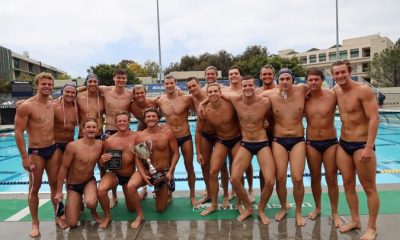
 Sports3 weeks ago
Sports3 weeks agoUSA Men’s Junior National Team Roster Announced For Upcoming World Aquatics U20 Water Polo Championships










 + Knicks’ coaching search a SMOKE-SCREEN
+ Knicks’ coaching search a SMOKE-SCREEN | PTI
| PTI
























